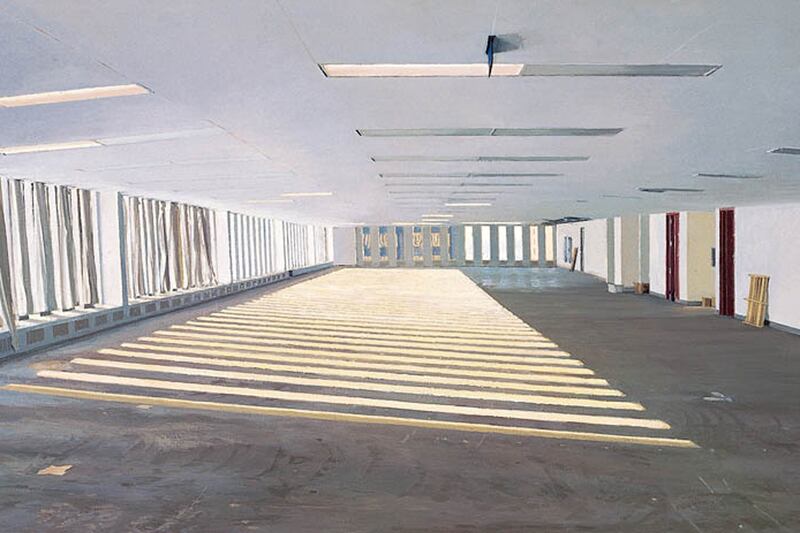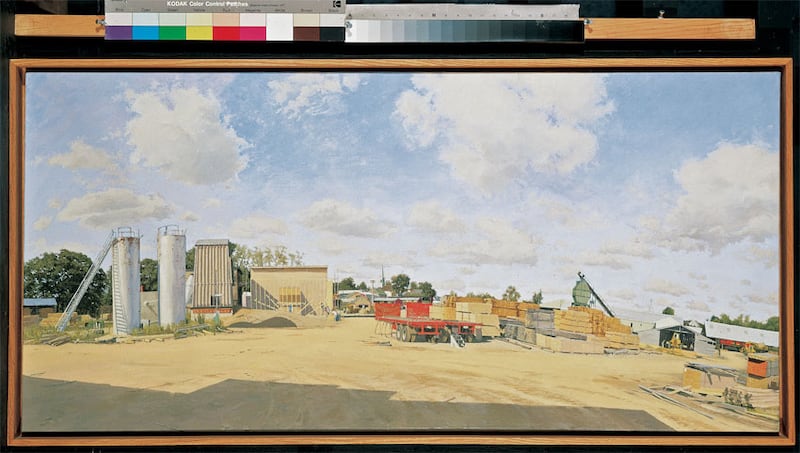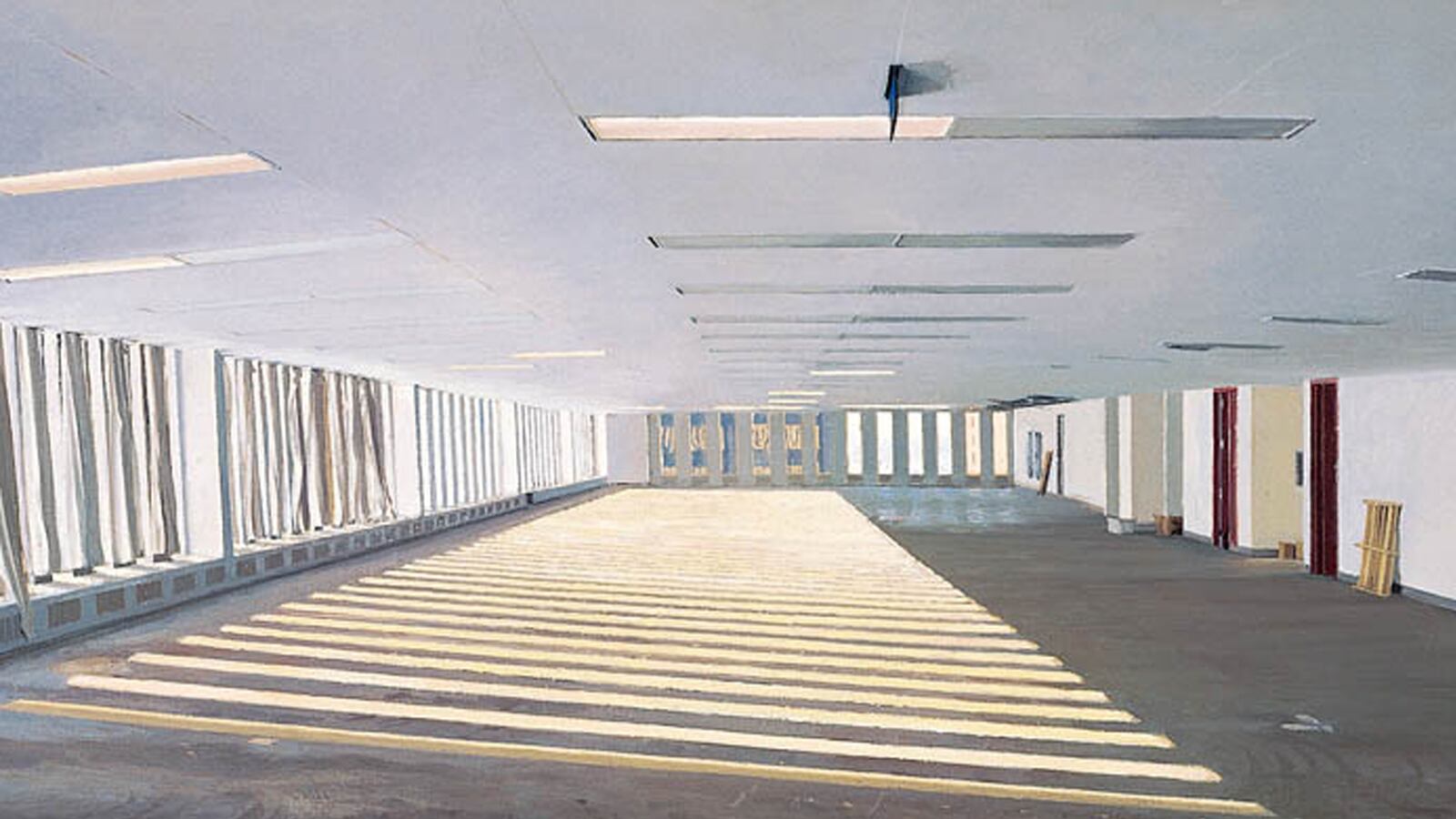There is a tradition in Europe of artists leading double lives as writers. Michelangelo was a prolific letter writer and poet. The 19th-century French painter Eugène Fromentin wrote fiction and travel books in addition to a venerable study of Old Masters in Belgium and Holland. Van Gogh’s letters continue to mesmerize readers. Picasso, that volcanic talker, filled volumes with his anecdotes, aphorisms, and witticisms.

In America, artists didn’t start taking up the pen in significant numbers until the ’60s, with the rise of Minimalism and Conceptualism. The influence of all-powerful critics was waning and, moreover, artists who produced plywood boxes and black canvases had some explaining to do.
But it wasn’t just Minimalists and Conceptualists who got into the act of writing. It was artists of every persuasion, including Mark Rothko, Donald Judd, Robert Smithson, Carl Andre, Barbara Kruger, Mike Kelley, Ed Ruscha, Peter Plagens, and Mel Bochner, to name a few. Bochner, whose word paintings are now showing at the Jewish Museum in New York, remembers encountering resistance when he started writing reviews of gallery shows in the ’60s: “At the time, artists who wrote were looked at suspiciously, as if writing somehow tainted their visual practice.” A painter friend accused him of “joining the enemy.”

One artist who never worried about such accusations is Rackstraw Downes, the English-born painter who since the ’60s has been writing steadily—and insightfully—about art and literature and how the two nourish and inform each other. The cream of Downes’s half-century of writing has just been published by Edgewise Press in a magnificent collection called Nature and Art Are Physical: Writings on Art, 1967-2008. It is a delicious stew of essays, lectures, a previously unpublished letter, and reviews of books and gallery shows, the work of a polymath fluent in the fields of art history, literature, criticism, ancient history, travel writing, music, movies, even meteorology.
Downes, now 74 and the recipient of a MacArthur “genius” grant, studied literary criticism at Cambridge before taking up painting in the ’60s. He soon became disaffected with the hard-edged abstractions he was making—and with the rising tides of Minimalism and Conceptualism, and all the money then flooding the New York art scene. (Some things never change.) As he set out to paint rural landscapes in Maine, Downes found himself drawn to such figurative painters as Fairfield Porter (another painter/critic/author), Alex Katz, and Neil Welliver, who had also started out as abstractionists and were also trying to fly solo against the prevailing winds.
“In this sense they were moderns; that is to say, artists who did not share or observe an inherited body of knowledge, skills, or critical precepts, or specified aims,” Downes writes in one of the book’s finest essays, “What the Sixties Meant to Me.” He adds, “(It was Picasso who, I believe rightly, identified working in solitude and so sharing no goals, as the common denominator of the Post-Impressionists, the founders of modern art.) I think that the figurative element in this work was not an attempt to oppose abstract painting, but to enlarge and increase the resources of painting.”

Downes soon increased his own resources—and ambitions. After some initial bucolic scenes painted partly in the studio, he started painting onsite, without benefit of photographs, sometimes revisiting a spot 100 times to complete a picture. In an effort to avoid making “escapist” landscapes—he is no fan of the Hudson River School or other prettifiers of nature—he started painting what he calls “disprized” scenes, such as scrap heaps, lumberyards, the underbellies of bridges, oil fields, scenes that reveal man’s effect on landscapes. Most of all, he tried to paint “exactly the way something is,” not the way traditional linear perspective says it’s supposed to look. And so his horizons slope, his power lines wiggle, his bridges curve. The effect is ravishing.
While Downes’s reading is catholic—he is versed in Shakespeare, Gibbon, E.M. Forster, Beckett, and many others—he is no snob. To illustrate his point in the essay “What Realism Means to Me,” he cites the Michelin travel guide’s advice that French tourists who want to understand New York City should stand outside the Wall Street subway station at 4:45 p.m. to witness the daily human tsunami known as le rush hour. This, Downes writes, is what realist writers and artists do: “They look at the common, everyday aspects of life with the fresh, surprised interest and curiosity of the traveler in a foreign country.”

Three writers he especially admires are Forster, Stendhal, and Chekhov, who bleached stylistic flourishes from their writing so they could focus on the subject. Like them, he strives to cut out “the pompous, the pretentious, the grandiose, the overweight” from both his painting and his writing. “Restraint is often one of the qualities of realism,” he writes. “What counts is to observe intensely, and when you do so you feel not so much inclined to advocate your opinion.”
Yet Downes is a man of strong opinions. He deplores mankind’s appalling stewardship of the planet, going back to the ancient Romans and their invasive methods of road building, de-forestation and monoculture farming. Some things never change. Today, in the name of progress, we have faceless interstate highways, clear-cut logging, and industrial farming. Downes disparages this as hubris, “man too big for his boots.” And yet he is too smart to despair that this is a one-way street. His choice of prosaic subjects for his paintings springs from his hunger for that most writerly of staples: narrative. Disprized landscapes tell stories, and Downes is, in his heart, a storyteller.
Consider the painting called “In the High Island Oil Field, February, After the Passage of a Cold Front,” from 1990. It is 16 inches tall and 10 feet long, a favored Downes format. It depicts an exhausted Texas oil field on scrub land, an old railroad bed and a watery ditch converging in the distance. Not a particularly pretty picture, at first glance, but intense looking is rewarded. Downes’s exegesis of the painting, in the essay “The Tenses of Landscape,” is worth quoting:

The perspective down the center of this painting is the raised embankment of an old railroad bed. The cows like to congregate and lie down to rest on this long-infertile ground because it dries off quickly after a rain; and so they dung it up extensively, too. So, it is gradually beginning to regain fertility and support a sparse cover of weeds which spread in by runners from either side of the embankment. Here the tenses of a landscape imagery which represents what is lost or threatened are reversed; we see decaying industrialization being replaced or reclaimed by the progress of nature. These weeds interest me more than ancient redwoods; they are the vanguard of nature’s forces as she wages her war back on us; or perhaps I should say, here nature re-embraces us, her prodigal sons and daughter. These weeds give the idea of nature not as a state we’ve lost but as a process with a future.
It’s a story only such a writerly painter could tell so well, in both images and words. Rackstraw Downes didn’t join the enemy when he started writing. He became his own greatest ally.






